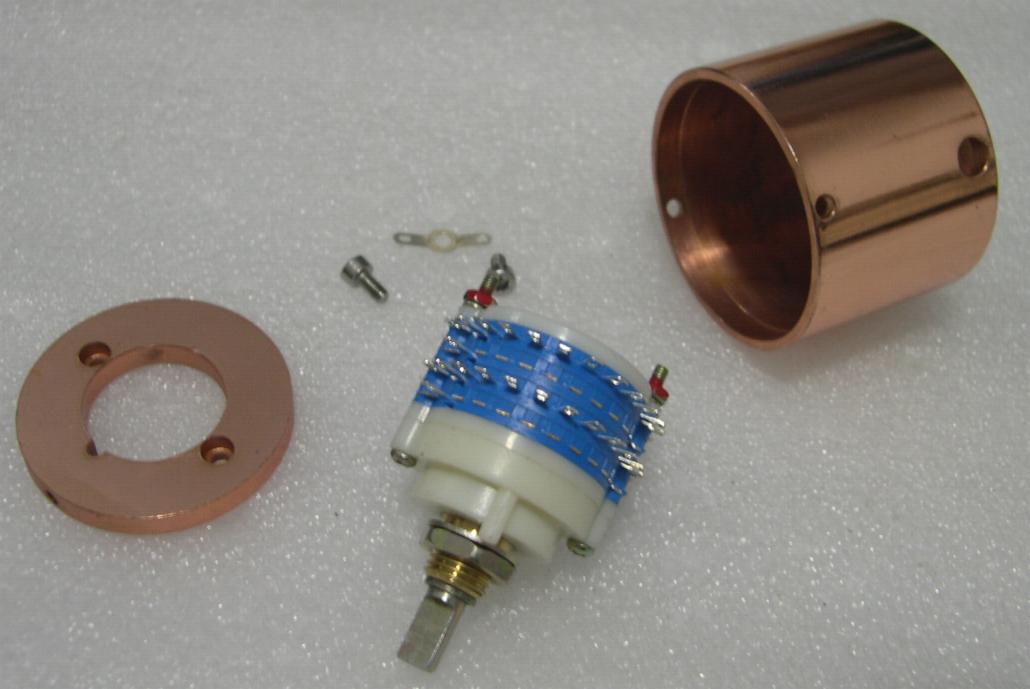Attenuator transformers used in conjunction with a multi position switch provide a high performance volume control function.

The standard volume control is the cheap and reliable variable resistor. A resistor simply takes the energy of an electrical signal and converts some of that energy to heat, leaving a signal that's smaller in terms of both voltage and current. If you find comfort in the water analogy for the flow of electricity, the voltage is analogous to pressure, and the current represents the flow rate. Imagine water flowing through a hose at a certain rate and a certain pressure. Make a hole in the hose and some of the water sprays out, leaving in the hose lower pressure and a lower rate of flow. Placing a resistor in the path of an electrical signal accomplishes something similar.
The transformer attenuator addresses the problem of attenuation by using a transformer rather than a resistor to decrease voltage. A transformer can take a high-voltage, low-current signal and convert it into a low-voltage, high-current signal of the same energy (minus some small losses in the transformer). Hence, you get the decrease in voltage that you need to lower volume while losing next to none of the signal’s energy. Instead of demolishing the signal and then resuscitating it actively, voltage is exchanged for current to achieve the desired result. Impedance between the source and the amplifier are matched in a manner similar to the way the transmission in your car matches the high-rpm/low-torque output of the engine to the low-rpm/high-torque rotation at the wheels. Best of all, the process occurs in a single step using a single passive component.
There are other advantages. Transformers have a primary coil that is coupled with a secondary coil through an air gap, so the signal applied to one coil is physically separated from the output at the second coil. This can decouple ground loops in the system, decreasing noise and hum. Coils can be easily wired in a balanced configuration, hence transformer attenuators are naturally compatible with both balanced and single-ended equipment.
For all of these reasons, transformer attenuators can be found in pro-audio recording studios and concert halls. Unfortunately, transformers must be carefully designed for flat frequency response, and they require that each attenuation step be individually wired for practical volume control. These factors make transformer attenuators large, heavy, and expensive, even as the associated electronic circuits in active preamps keep getting cheaper. For these reasons, transformer attenuation has remained relatively unknown in home audio. Until now.